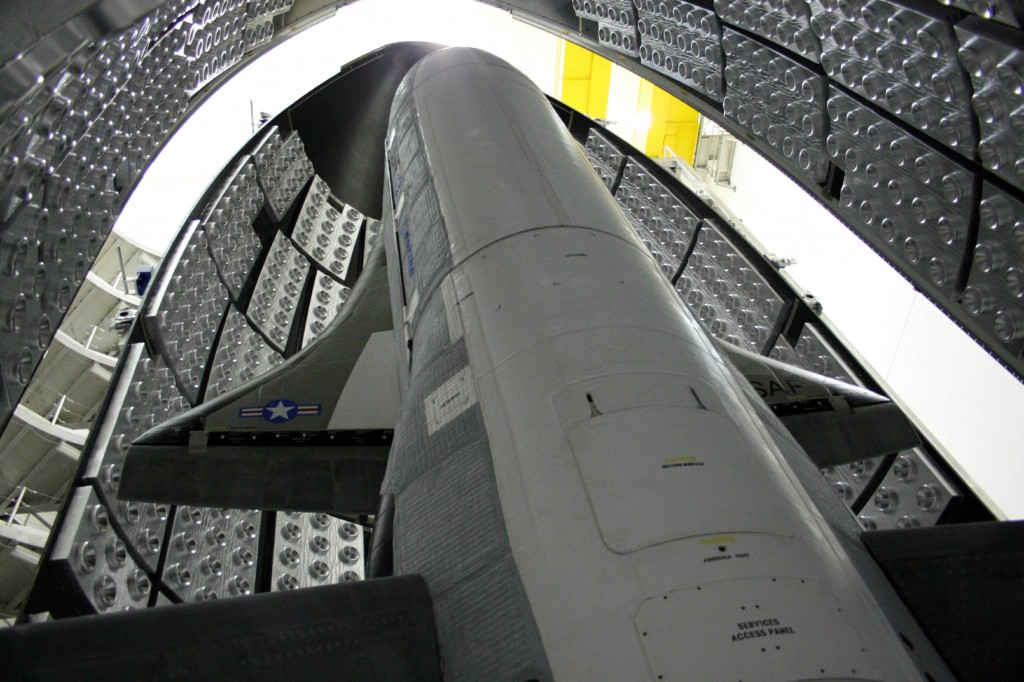The United States Air Force (USAF) is preparing their secretive X-37B space plane for its fifth mission in early September. As always, most of the X-37B’s payload and mission is classified, but Space.com has reported that the launch may be slated for early September.
The fifth mission of the X-37B, known as Orbital Test Vehicle-5 (OTV-5), is different from previous launches in that the space plane will be carried into orbit atop a SpaceX Falcon 9 rocket.
The previous four X-37B missions arrived in space via a Lockheed Martin-Boeing Atlas V rocket. The Falcon 9 costs about $62 million per launch due to it being partially reusable, compared to the Atlas V’s $109 million per launch.
In a departure from precedent, the X-37B will be launching from NASA’s Kennedy Space Center, which is adjacent to Cape Canaveral Air Force Station, the site of the previous four launches. While the launch date is believed to be in early September, USAF spokeswoman Capt. Annmarie Annicelli, told Inside Outer Space: “At this time, I do not have the launch date to release.”
While most of the payload is classified, one confirmed project aboard the OTV-5 is the the US Air Force Research Laboratory’s Advanced Structurally Embedded Thermal Spreader, or ASETS-11. The instrument is meant to test the effect of long-duration space missions on electronic and oscillating heat pipes.
Every additional X-37B mission has broken the previous one’s longevity record. OTV-1 launched in 2010 and spent 224 days in space. OTV-2 launched the next year and more than doubled the length of the previous mission, 468 days. OTV-3 launched in 2012 and spent 675 days in space, while the most recent mission, OTV-4, narrowly missed out on two years in space when it spent 718 days in orbit.
The X-37B is 29 feet long and under 10 feet tall, with a nearly 15-foot wingspan. At launch, it weighs about 11,000 pounds and is powered by a combination of solar cells and lithium-ion batteries. The USAF owns two of them.
With a classified payload and a vague mission, the X-37B is one of the Pentagon’s biggest mysteries. Theories of its purpose range from it being a spy satellite to a space weapons testing platform.
The Pentagon has consistently denied rumors that the X-37B has any nefarious purpose. It is instead meant to serve as “an experimental test program to demonstrate technologies for a reliable, reusable, unmanned space test platform for the US Air Force.”
“Technologies being tested in the program include advanced guidance, navigation and control, thermal-protection systems, avionics, high-temperature structures and seals, conformal reusable insulation, lightweight electromechanical flight systems, advanced propulsion systems and autonomous orbital flight, re-entry, and landing.”










